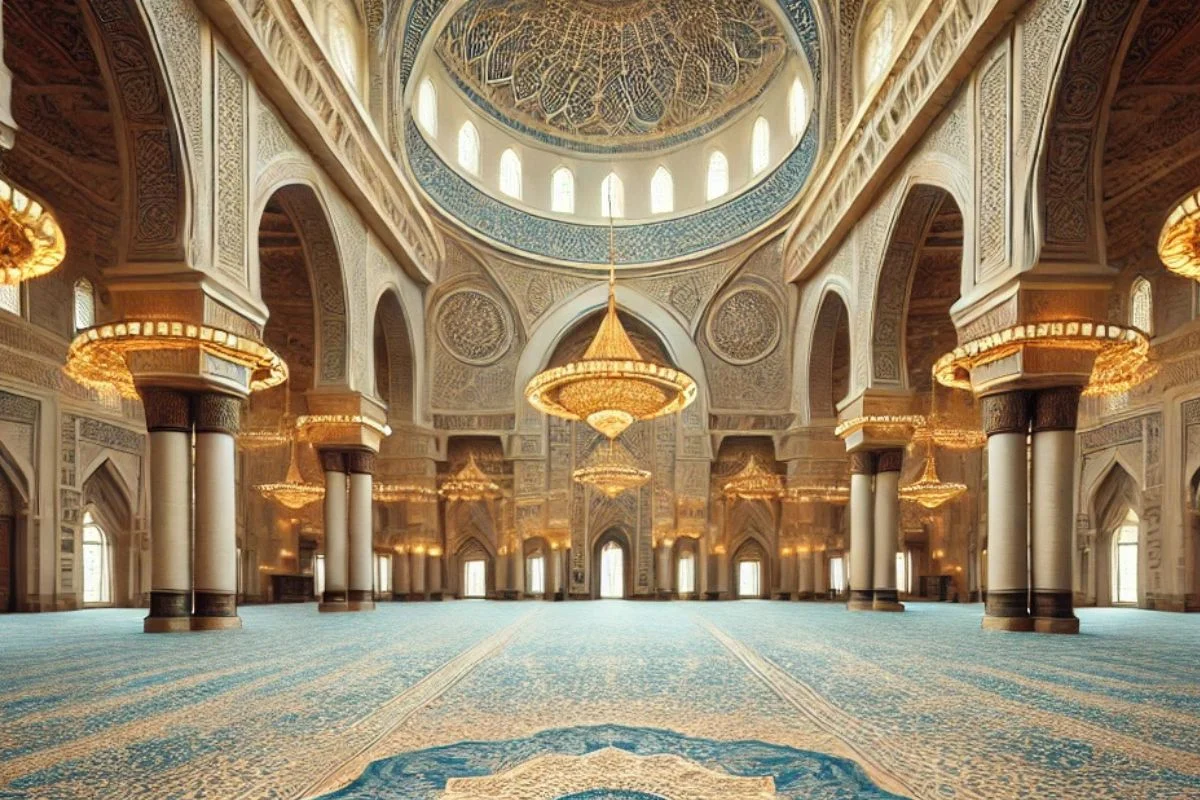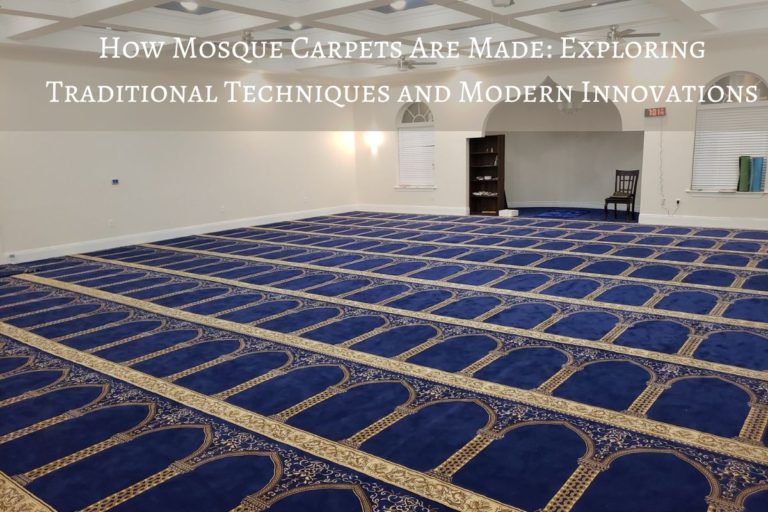Mosque carpets endure constant foot traffic, daily prayers, and the passage of time, making durability a crucial factor in their design. But longevity alone isn’t enough—modern mosque carpets must also align with sustainability goals, reflecting a growing awareness of environmental stewardship. The perfect mosque carpet is a blend of resilient materials, expert craftsmanship, and eco-conscious practices. In this blog, we’ll explore the elements that make mosque carpets not only durable but also sustainable, ensuring they remain beautiful, functional, and environmentally friendly for generations to come.
Importance of Material Selection
The foundation of a durable mosque carpet lies in its material. Wool is a top choice, known for its resilience, softness, and natural stain resistance. Nylon and polyester offer strong alternatives, providing durability and cost-effectiveness. For sustainable options, carpets made from recycled fibers or organic wool are gaining popularity. These materials not only withstand heavy foot traffic but also minimize environmental impact. Additionally, choosing the right backing material enhances stability and prevents wear and tear. By prioritizing high-quality and eco-friendly materials, mosques can ensure their carpets endure years of use while aligning with sustainability goals.
Role of Craftsmanship in Durability
Craftsmanship significantly impacts the longevity of mosque carpets. Hand-knotted carpets, renowned for their intricate detailing and tight knots, can last for decades, even centuries. Machine-woven carpets, while less time-intensive to produce, also offer durability when made with dense pile and robust fibers. The quality of the weave determines the carpet’s ability to resist wear and maintain its form over time. Skilled artisans focus on precise knotting techniques and uniform patterns, ensuring every carpet is a work of enduring quality. Investing in expert craftsmanship results in a carpet that retains its beauty and functionality for years to come.
Environmental Impact and Sustainability
Sustainability is becoming a key consideration in mosque carpet production. Manufacturers are increasingly adopting eco-friendly practices, such as using natural dyes, renewable materials, and low-energy production methods. Carpets made from recycled fibers or biodegradable materials help reduce waste and carbon footprints. Certifications like Green Label or OEKO-TEX assure buyers that the products meet environmental standards. Sustainable mosque carpets not only protect the environment but also align with the Islamic principles of stewardship and responsibility toward the earth. By choosing sustainable options, mosques can contribute to global efforts to preserve natural resources for future generations.
Maintenance Practices for Longevity
Proper maintenance is essential for extending the life of mosque carpets. Regular vacuuming helps remove dust and debris that can wear down fibers over time. Spot cleaning and prompt stain removal prevent permanent damage and keep carpets looking pristine. Rotating carpets in high-traffic areas ensures even wear, while professional cleaning services can deep-clean and rejuvenate fibers periodically. Additionally, using protective mats at mosque entrances minimizes dirt and moisture transfer. By implementing a consistent maintenance routine, mosques can preserve the beauty and durability of their carpets, ensuring they remain a central feature of the space for years.
Innovations in Sustainable Carpet Technology
Advancements in technology have revolutionized mosque carpets, making them more durable and eco-friendly. Modern carpets often feature antimicrobial treatments, which prevent the growth of bacteria and fungi, enhancing hygiene in high-traffic areas. Stain-resistant coatings help maintain a carpet’s appearance by repelling liquids and dirt. Innovations like low-emission materials and biodegradable fibers reduce environmental impact without compromising quality. Additionally, some carpets are now made with renewable energy, further contributing to sustainability goals. These technological improvements ensure that mosque carpets not only endure daily wear but also support environmentally conscious practices.
Cost vs. Longevity: A Long-Term Investment
Investing in a high-quality, durable mosque carpet may involve a higher upfront cost, but it pays off in the long run. Cheaper carpets often wear out quickly, requiring frequent replacements, which can become costly over time. Durable carpets, on the other hand, are designed to withstand heavy use and last for years, offering better value for money. Sustainable options may also have a slightly higher price tag but provide long-term savings through reduced maintenance and replacement costs. By viewing carpet purchases as a long-term investment, mosques can save money while ensuring a lasting, aesthetically pleasing worship space.
Community and Cultural Considerations
Mosque carpets often carry deep cultural and community significance. In many cases, communities come together to choose or donate carpets, reflecting shared values and traditions. The design and quality of the carpet may symbolize the mosque’s identity and heritage. Durable and sustainable carpets demonstrate a commitment to future generations, ensuring the mosque remains a welcoming and functional space for all. By involving the community in carpet selection and maintenance, mosques foster a sense of unity and collective responsibility, turning the carpet into a meaningful symbol of their shared faith and dedication.
Real-World Examples of Durable Mosque Carpets
Numerous mosques around the world serve as examples of how durable and sustainable carpets can enhance worship spaces. For instance, the Sheikh Zayed Grand Mosque in Abu Dhabi features one of the world’s largest hand-knotted carpets, known for its intricate design and durability. Similarly, many smaller mosques have adopted eco-friendly practices, choosing carpets made from recycled materials. These real-world examples showcase the practical and aesthetic benefits of investing in high-quality carpets. They demonstrate how thoughtful design and sustainable choices can create beautiful, long-lasting interiors that inspire and serve worshippers for generations.
Conclusion: Weaving Longevity and Sustainability into Sacred Spaces
The choice of mosque carpets goes beyond aesthetics; it’s a vital investment in durability, comfort, and environmental responsibility. By selecting high-quality materials, prioritizing expert craftsmanship, and adopting sustainable practices, mosques can ensure their carpets endure for years while minimizing their ecological footprint. Proper maintenance further enhances longevity, preserving the carpet’s beauty and functionality. Whether through innovative technologies or community-driven initiatives, mosque carpets embody a blend of tradition and modernity. They stand as enduring symbols of faith, unity, and a collective commitment to caring for sacred spaces and the planet.







